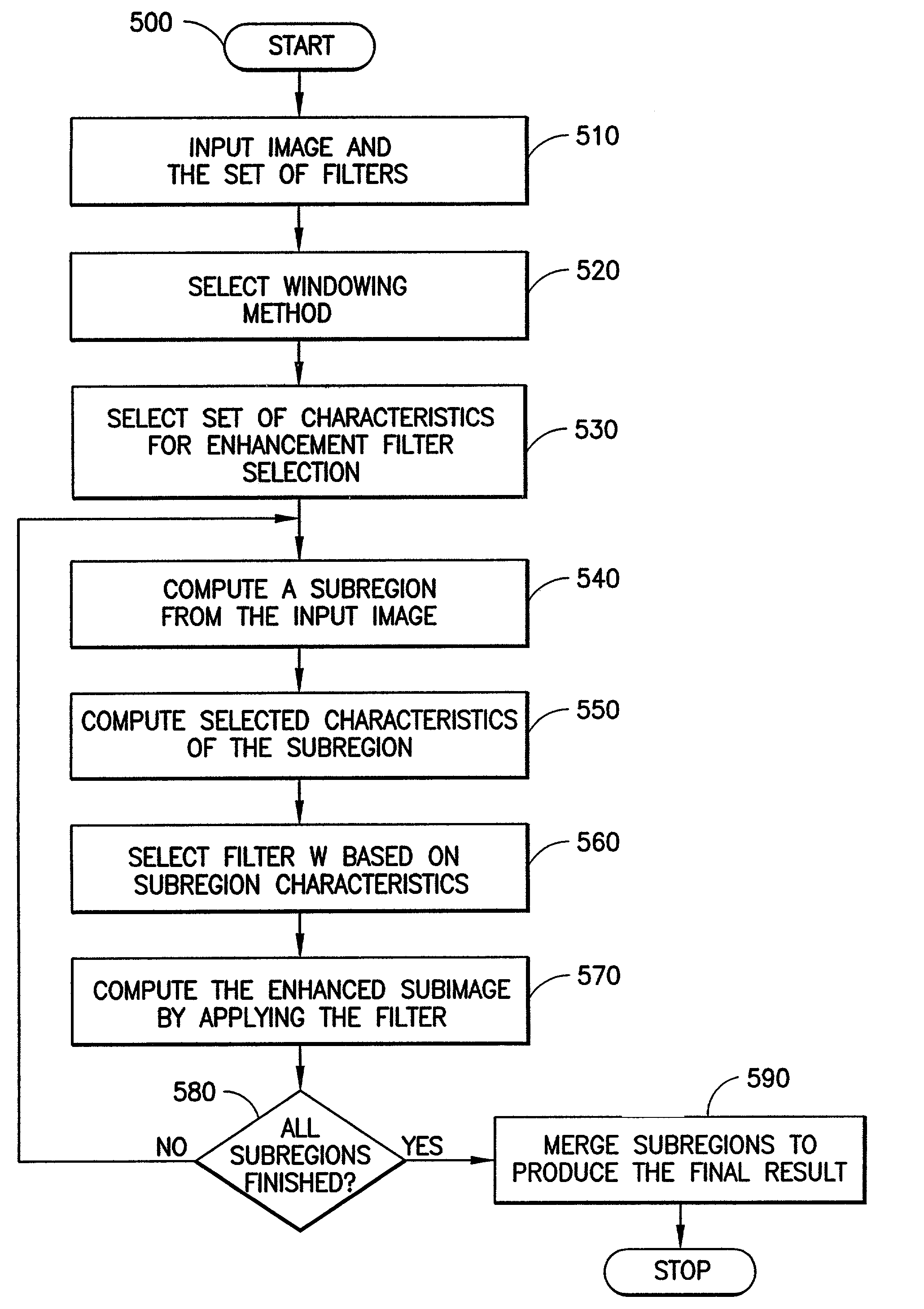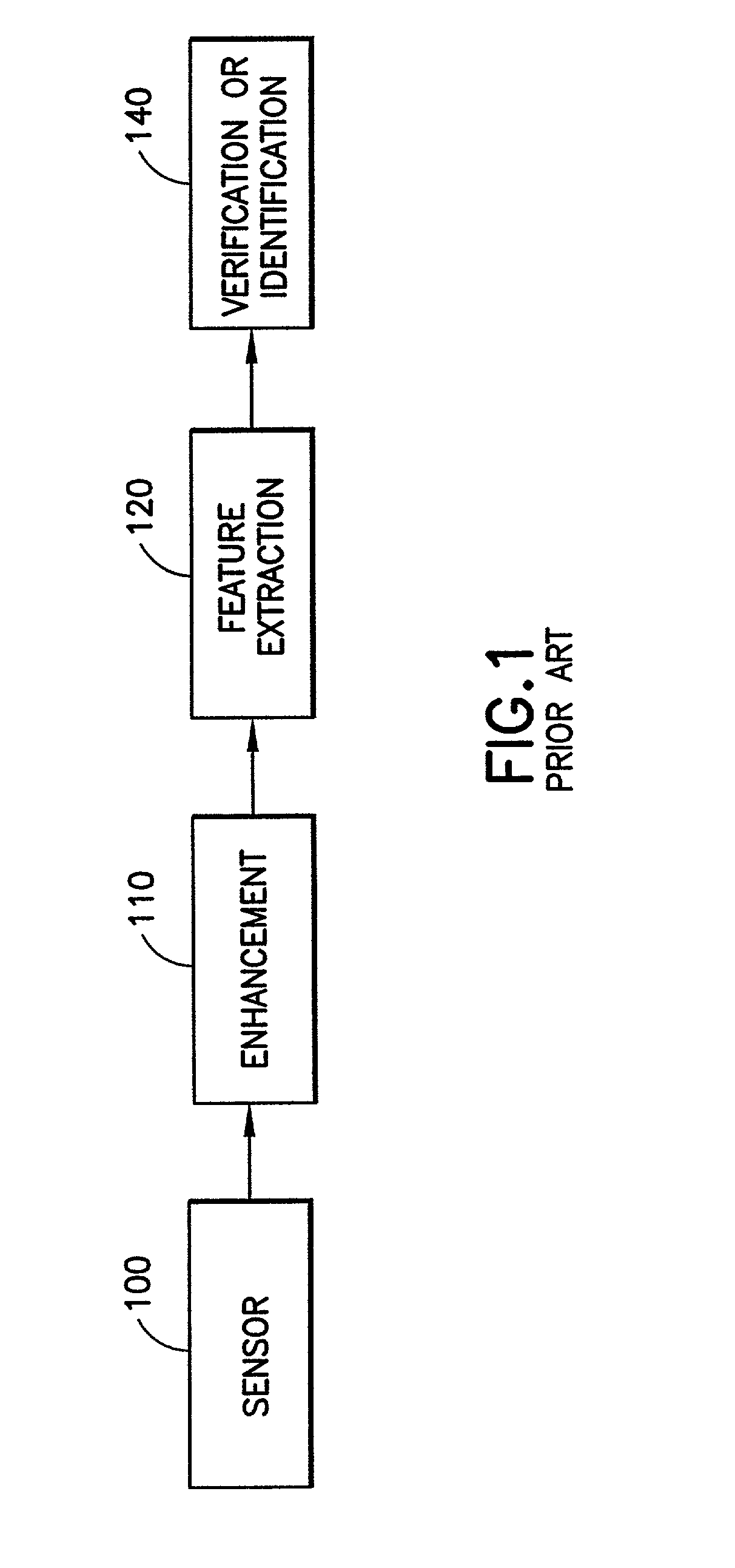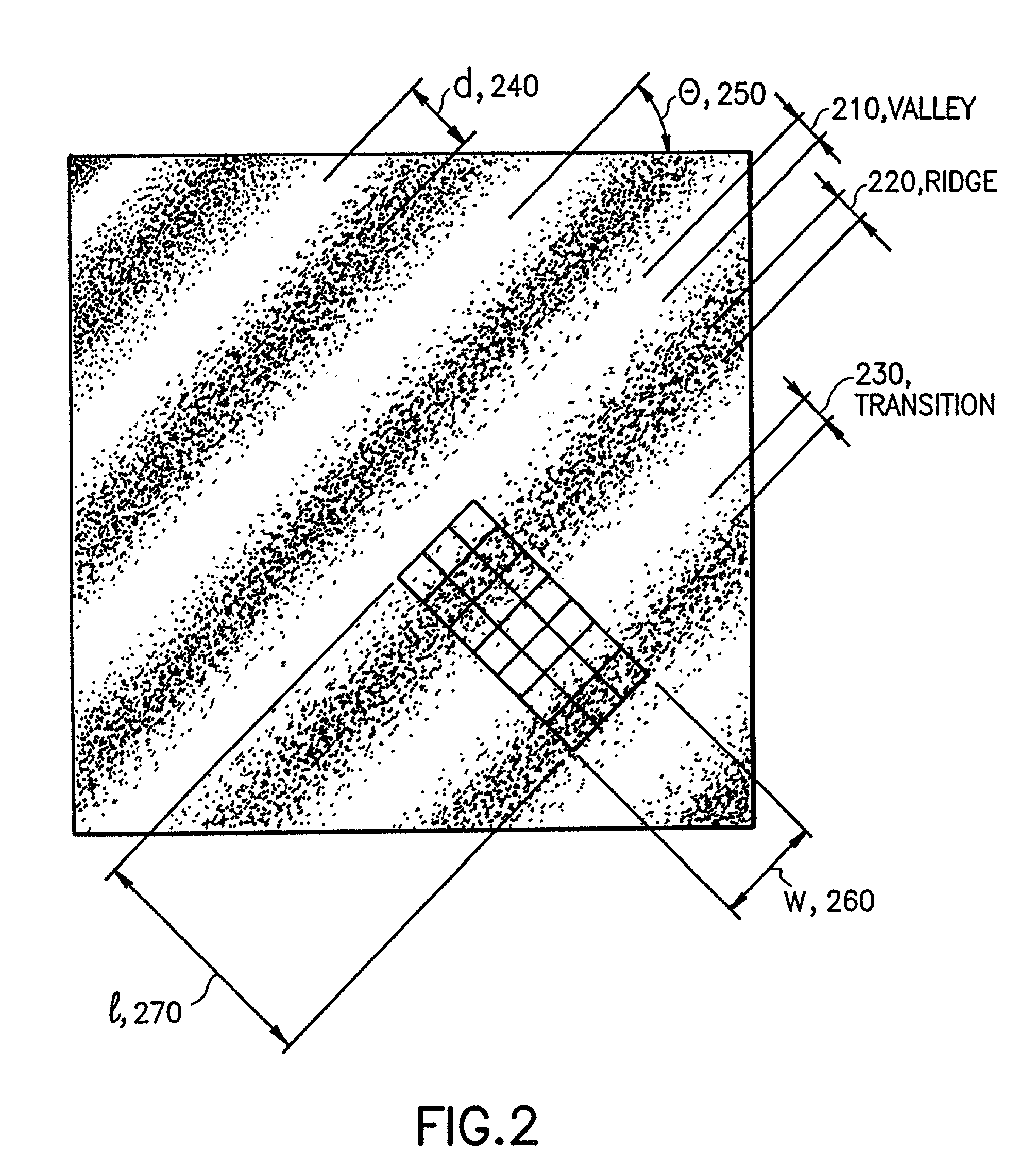System and method for fingerprint image enhancement using partitioned least-squared filters
a partitioned least squares and fingerprint technology, applied in image enhancement, image analysis, instruments, etc., can solve the problems of increasing the computational burden of the on-line enhancement process, inability to achieve noisy gray-scale images, and inability to give good performance over a large number of sensed fingerprints
- Summary
- Abstract
- Description
- Claims
- Application Information
AI Technical Summary
Benefits of technology
Problems solved by technology
Method used
Image
Examples
Embodiment Construction
[0092]Fingerprint images are extremely rich source of data. The fingerprint characteristics (e.g., ridge height, ridge width, quality) may be significantly different for different target populations. Further, the statistics of the fingerprint characteristics of a target population can potentially be dynamically changing due to any number of extrinsic (e.g., weather) or intrinsic (e.g., population shifts) conditions. Typically, the poor quality fingerprints due to (say) bad weather (e.g., dry) conditions may be completely different in appearance than the poor quality fingerprints due to (say) bad skin conditions (e.g., excessive sweat). These different poor quality fingerprints may require different and peculiar image processing methods to correctly and effectively enhance their appearance and to make the fingerprint ridge information more conspicuously visible. Under such conditions, it is desirable that a fingerprint enhancement algorithm can automatically adapt to the characterist...
PUM
 Login to View More
Login to View More Abstract
Description
Claims
Application Information
 Login to View More
Login to View More - R&D
- Intellectual Property
- Life Sciences
- Materials
- Tech Scout
- Unparalleled Data Quality
- Higher Quality Content
- 60% Fewer Hallucinations
Browse by: Latest US Patents, China's latest patents, Technical Efficacy Thesaurus, Application Domain, Technology Topic, Popular Technical Reports.
© 2025 PatSnap. All rights reserved.Legal|Privacy policy|Modern Slavery Act Transparency Statement|Sitemap|About US| Contact US: help@patsnap.com



